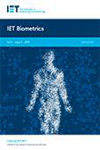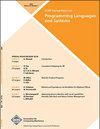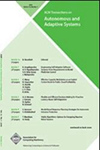期刊简介
The field of biometric recognition - automated recognition of individuals based on their behavioural and biological characteristics - has now reached a level of maturity where viable practical applications are both possible and increasingly available. The biometrics field is characterised especially by its interdisciplinarity since, while focused primarily around a strong technological base, effective system design and implementation often requires a broad range of skills encompassing, for example, human factors, data security and database technologies, psychological and physiological awareness, and so on. Also, the technology focus itself embraces diversity, since the engineering of effective biometric systems requires integration of image analysis, pattern recognition, sensor technology, database engineering, security design and many other strands of understanding.The scope of the journal is intentionally relatively wide. While focusing on core technological issues, it is recognised that these may be inherently diverse and in many cases may cross traditional disciplinary boundaries. The scope of the journal will therefore include any topics where it can be shown that a paper can increase our understanding of biometric systems, signal future developments and applications for biometrics, or promote greater practical uptake for relevant technologies:Development and enhancement of individual biometric modalities including the established and traditional modalities (e.g. face, fingerprint, iris, signature and handwriting recognition) and also newer or emerging modalities (gait, ear-shape, neurological patterns, etc.)Multibiometrics, theoretical and practical issues, implementation of practical systems, multiclassifier and multimodal approachesSoft biometrics and information fusion for identification, verification and trait predictionHuman factors and the human-computer interface issues for biometric systems, exception handling strategiesTemplate construction and template management, ageing factors and their impact on biometric systemsUsability and user-oriented design, psychological and physiological principles and system integrationSensors and sensor technologies for biometric processingDatabase technologies to support biometric systemsImplementation of biometric systems, security engineering implications, smartcard and associated technologies in implementation, implementation platforms, system design and performance evaluationTrust and privacy issues, security of biometric systems and supporting technological solutions, biometric template protectionBiometric cryptosystems, security and biometrics-linked encryptionLinks with forensic processing and cross-disciplinary commonalitiesCore underpinning technologies (e.g. image analysis, pattern recognition, computer vision, signal processing, etc.), where the specific relevance to biometric processing can be demonstratedApplications and application-led considerationsPosition papers on technology or on the industrial context of biometric system developmentAdoption and promotion of standards in biometrics, improving technology acceptance, deployment and interoperability, avoiding cross-cultural and cross-sector restrictionsRelevant ethical and social issues
生物特征识别领域----根据个人的行为和生物特征自动识别个人----现在已经达到了一个成熟的水平,可行的实际应用既有可能,也越来越多。生物识别技术领域的特点是跨学科性,因为虽然主要侧重于强大的技术基础,但有效的系统设计和实施往往需要广泛的技能,包括人为因素、数据安全和数据库技术、心理和生理意识等。此外,技术重点本身也包含多样性。因为有效的生物识别系统的工程需要整合图像分析、模式识别、传感器技术、数据库工程、安全设计和许多其他理解方面。虽然侧重于核心技术问题,但人们认识到这些问题可能具有内在的多样性,在许多情况下可能跨越传统的学科界限。因此,该杂志的范围将包括任何主题,它可以表明,一篇论文可以增加我们对生物识别系统的理解,标志着生物识别的未来发展和应用,或促进更大的实际吸收相关技术:个人生物识别模态的发展和增强,包括已建立的和传统的模态(如面部,指纹,虹膜,签名和手写识别),以及更新或新兴的模态(步态,耳形,神经模式等)。多生物统计学,理论和实践问题,实际系统的实现,多分类器和多模态方法软生物统计学和用于识别、验证和特征预测的信息融合人为因素和生物统计系统的人机界面问题,异常处理策略模板构造和模板管理,老化因素及其对生物统计系统的影响可用性和面向用户的设计,心理学和生理学原理以及系统集成用于生物识别处理的传感器和传感器技术支持生物识别系统的数据库技术生物识别系统的实施、安全工程含义、实施中的智能卡和相关技术、实施平台、系统设计和性能评估信任和隐私问题,生物识别系统的安全性和支持技术解决方案,生物识别模板保护生物识别密码系统,安全性和生物识别相关加密与取证处理和跨学科共性的联系核心基础技术(例如图像分析、模式识别、计算机视觉、信号处理等),可以证明与生物识别处理的特定相关性应用和应用导向的考虑因素关于生物识别系统开发的技术或行业背景的立场文件采用和推广生物识别标准,提高技术接受度、部署和互操作性,避免跨文化和跨部门限制相关的伦理和社会问题
《IET Biometrics》期刊已被查看: 次









